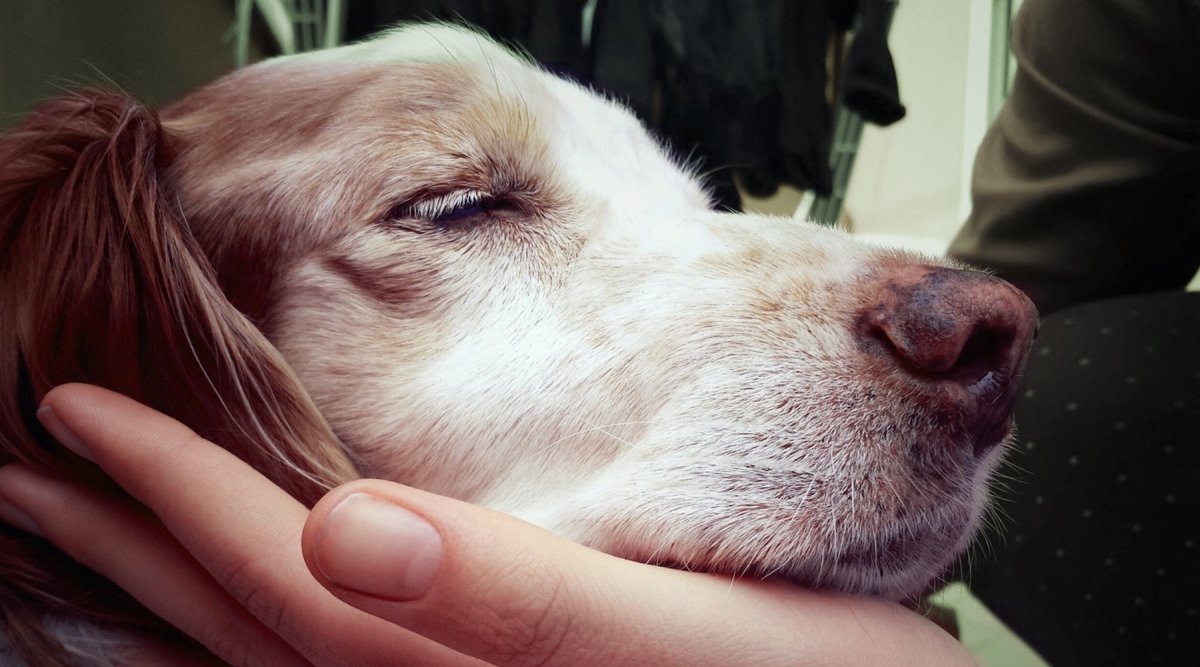Ticks can be found on meadows, trees and bushes, especially between March and October. They are not only a nuisance, but also pose a risk to humans and animals. Many dogs can become infected with pathogens that are transmitted through a tick bite on dogs. In this interview, our vet Philipp Schledorn reveals how a tick bite can harm dogs and humans and which pathogens are transmitted by these small parasites.
Dog has tick - Why ticks can be dangerous?
AniForte®: When a tick strikes, it is usually referred to as a tick bite. So do ticks bite?
Dr. Schledorn: Not quite. In fact, we usually say "tick bite", but actually mean a "tick bite". Ticks do not bite, but use their mouthparts to bore through the dog's epidermis and suck blood. In young puppies or cats, this can even lead to anemia if the infestation is particularly severe. However, this is rare. A tick bite can also harm dogs, cats and humans by triggering infections and diseases.
AniForte®: When can a tick bite on dogs and cats become dangerous?
Dr. Schledorn: Tick bites can transmit pathogens during the sucking process. The infected dog does not necessarily have to fall ill, but it carries the bacteria in its blood from this point onwards and the infection can break out later. Many of the transmitted infectious diseases are quite dangerous for animals and humans.

AniForte®: What is the most common infectious disease transmitted by a tick bite in dogs?
Dr. Schledorn: With around 80,000 animals infected every year, Lyme borreliosis poses the greatest risk of infection. Borrelia bacteria are transmitted to the dog via the tick's saliva. It can be particularly dangerous if the symptoms, which are often initially unspecific, are not recognized immediately.
AniForte®: What are the symptoms of Lyme disease in dogs?
Dr. Schledorn: The dog usually shows temporary, non-specific symptoms such as fever, loss of appetite, swollen lymph nodes and temporary signs of paralysis. It is typical of Lyme disease that the symptoms go away again after a short time, but then reappear in episodes. This means that the symptoms reappear and the dog appears exhausted.
AniForte®: "Tick bites in dogs: when to see a doctor?" is a question frequently asked by our customers in connection with Lyme disease. What is your answer?
Dr. Schledorn: If the dog is repeatedly weak or lame after a tick bite, it is important to take him to the vet. A gradual progression of the disease can complicate the course.
AniForte®: Can a dog suffering from Lyme disease be cured?
Dr. Schledorn: Yes, the chances of recovery are very good with antibiotic treatment. However, Lyme disease must have been recognized and diagnosed by the vet by means of an antibody test. Otherwise, in the worst case, kidney failure can occur in dogs with high levels of Borrelia antibodies. Transmission to humans is also not without danger: there are around a thousand cases in Germany every year with similar symptoms.
AniForte®: What other infectious diseases are transmitted to dogs by ticks?
Dr. Schledorn: The so-called canine malaria, babesiosis, is also caused by tick bites. The symptoms are similar to those of Lyme disease. The affected dog can also show neurological deficits. Infected dogs often suffer from anemia, as their red blood cells are destroyed by protozoa. Babesia, the cause of canine malaria, can be detected by a blood test. Treatment involves the use of antiprotozoal drugs to combat the single-celled parasite. The prognosis is also good here after successful medication.

AniForte®: What disease is it if the dog tends to bleed as well as being unwilling to eat, apathetic and feverish?
Dr. Schledorn: That sounds very much like anaplasmosis, a disease caused by the bacterium Anaplasma phagocytophilum. In this case, the dog's white blood cells are affected, which are infected and destroyed. In Germany, around one in twenty ticks could be infected with the pathogen. If diagnosed in good time, antibiotic therapy is administered and sometimes blood transfusions are necessary.
AniForte®: Then there is tick-borne encephalitis (TBE). Is this viral disease also dangerous for dogs?
Dr. Schledorn: The actual target of the TBE virus is humans. Dogs appear to be relatively resistant to this infection, but individual cases do occur. Once it has broken out, the disease has a very serious course, which can lead to inflammation of the brain (meningoencephalitis) as well as fever, apathy and aggression. This can result in seizures, paralysis of the limbs, strabismus, constricted pupils (miosis) and an excessive sensation of pain in the head and neck area. Special care should therefore be taken against tick bites if you live in a tick area and frequently walk your dog in woods and meadows.
AniForte®: Now to the last disease for today: How do you recognize tick fever in dogs?
Dr. Schledorn: Tick fever, also known as ehrlichiosis, is an acute to chronic infectious disease and is characterized by apathy in the dog, reduced appetite, possibly even emaciation, fever, swelling of the spleen and lymph nodes, nosebleeds, bleeding into the eyes, punctiform hemorrhages in the skin, bloody urine, stiff gait, oedema and swelling in the limbs. Double infections with babesia, i.e. canine malaria, often occur. Tick-borne fever occurs mainly in the tropics, subtropics and the Mediterranean region. This disease can actually only break out after a tick bite on a dog during a vacation in these regions. When to go to the doctor is explained when one of the symptoms mentioned occurs after a stay in the affected area. Tick fever can also be treated with antibiotics.
Tick bite dog - What dog owners can do
AniForte®: What advice do you have for dog owners - especially now in the springtime - to avoid infection?
Dr. Schledorn: No dog owner likes to see their pet suffer, but contact with ticks is often unavoidable on a spring walk. My advice is always tick prophylaxis. On the one hand, this means using tick repellent products, but also regularly checking the dog after every walk. The best thing to do after a walk is to run a flea comb through the dog's hair to remove any ticks you have just collected. There is now also a vaccination against Lyme disease. This is highly advisable if you live in an area with a particularly high risk of infection.
AniForte®: Many dog owners call us in panic and report: Dog has a tick - what should I do?
Dr. Schledorn: First of all, it is important to remove the tick.
To do this, part your dog's fur at this point so that you have a good view of the tick. Then you should get hold of the tick with tick tweezers as close to the skin as possible to prevent the tick's head from getting stuck at the bite site. This can otherwise lead to inflammation later on. Then slowly twist the tick out with the tick tweezers - it doesn't matter in which direction. It is important to check the puncture site again over the next few days. Unfortunately, once a tick bite has occurred, a single bite is enough to transmit pathogens. It is therefore important to pay close attention to possible symptoms after a tick bite.
AniForte®: Thank you very much for the interview.
Dr. Schledorn: Thank you very much for the invitation. I wish all dogs and their owners a tick bite-free time!




